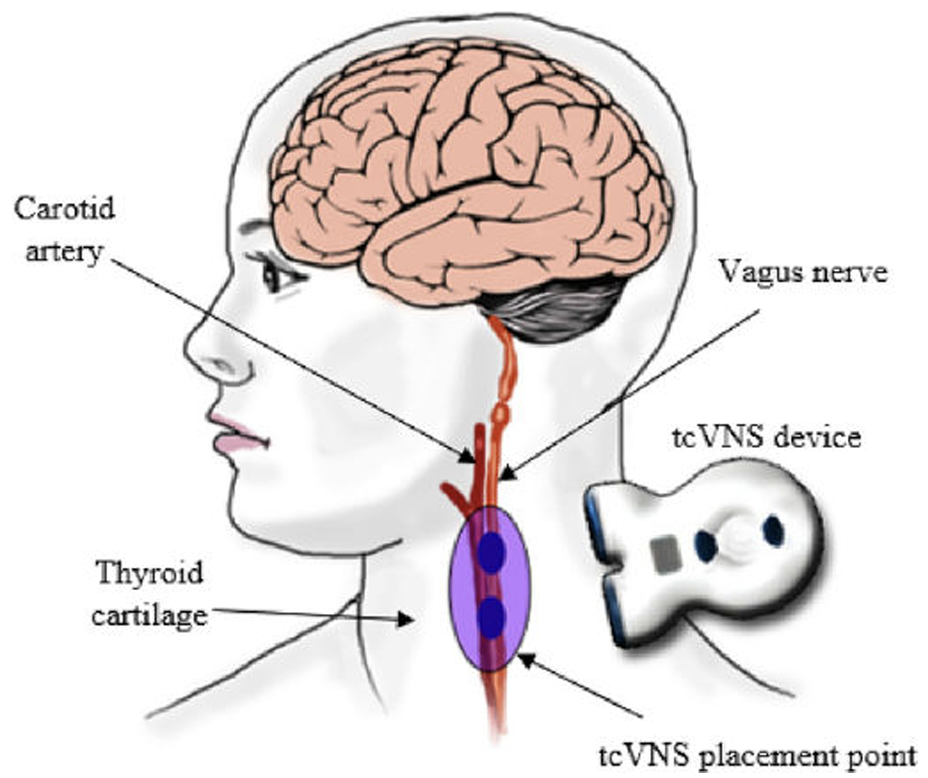PTSD and tcVNS
Effect of Vagus Nerve Stimulation on Cognition Improvement of patients with PTSD
One of my interest areas is investigation of physiolocal responses and behavioral analysis on patients with posttraumatic stress disorder (PTSD) during their neuromodulation therapy to see its effect on recovery of patients. Below here is a brief summary of our published research study on analyzing the effect of Vagus Nerve Stimulation (VNS) for improving cognition and memory power in patients with PTSD.
Introduction
Despite significant advancements in diagnosing and treating mental health disorders through modern science and technology, many patients still suffer from stress-related conditions, including posttraumatic stress disorder (PTSD). PTSD is one of the extreme mental health conditions, characterized by hyperarousal, stress, avoidance, re-experiencing symptoms, and deficits in memory and concentration. Many patients with PTSD have limited or almost no response to available treatments in terms of symptoms and associate cognitive impairment. VNS is a neuromodulation therapy that involves the use of a device to stimulate the vagus nerve, which plays an important role in regulating many bodily functions. The device is noninvasively placed on left/right side of the neck area near thyroid cartilage for a short time. The VNS has a great potential to enhance function when paired with cognitive and motor tasks, which may improve quality of life and productivity.

Methods
We performed a double-blind study on 15 patients with PTSD (10 men and 5 women, mean age 40.4 years) using a noninvasive transcutaneous cervical VNS (tcVNS) device. Patients were randomly assigned to self-administer active or sham VNS stimulation twice daily for a 3-month period. During stimulation, participants finished memory assessment tests including paragraph recall involving paragraph encoding followed by its recall and N-back tests. Their performances were evaluated once in a month in a longitudinal fashion. After three months, they were provided an active VNS device and advised to use twice daily VNS modulation.
Results and Analysis
active stimulation group resulted in a significant improvement in paragraph recall performance following paired with paragraph encoding at two months (p < 0.05), with no such pattern/trend in the sham population. Active tcVNS resulted in a 91% increase in paragraph recall performance within the group (p = 0.03), while the sham stimulation participants exhibited no such improvement. Also, the N-back test results showed a pattern of better performance in the active VNS group as compared with the sham VNS group. Limitations: The sample size for our study was small. Although the active and sham tcVNS devices were developed to deliver a similar sensations of VNS stimulation, the data on participants’ perception of whether they were getting active or sham treatment was not collected by researchers.
Conclusions
This longitudinal study shows benefit for attention and memory symptoms associated with PTSD and suggests that tcVNS may improve quality of life, work, and social functioning for PTSD patients. Future studies are needed to evaluate its generalizability.
Reference
T. Choudhary et al., “Effect of transcutaneous cervical vagus nerve stimulation on declarative and working memory in patients with Posttraumatic Stress Disorder (PTSD): A pilot study,” Journal of Affective Disorders 339 (2023): 418-425. See publications page.